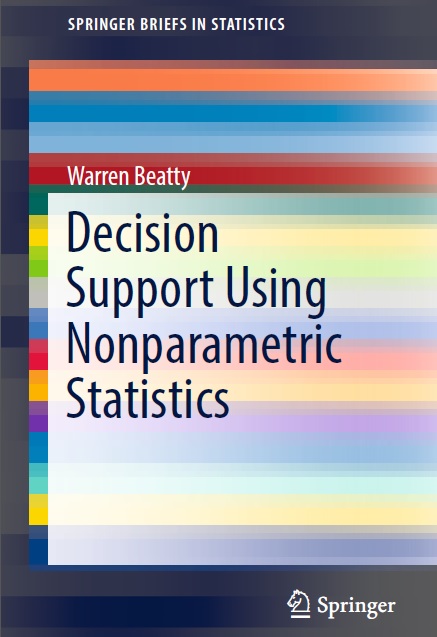Decision Support
Using
Nonparametric Statistics


Decision makers who utilize the generic statistics built into spreadsheet programs make poor decisions when they use the results of analysis inapproriate for their data. The reason is not because they are not good decision makers, but because they simply don't know any better and use the wrong analysis tools. This is particularly true in business and medicine.
Most college curricula require that most students, regardless of major, take a single course in statistics, which is usually a sophomore level course taught by the Department of Statitics. That course normally focuses upon what is known as 'parametric' statistics. And that would be fine if the world generated only data that fit the criteria and assumptions necessary to validly use parametric statistics. But it doesn't.
This book answers that problem.
This book presents nonparametric statistical tools that can VALIDLY support decisions by properly analyzing ANY data. That is something that cannot be said about parametric statistics. While 'built-in' statistics tools can do a great job of analyzing data that satisfy the tools' rather stringent and numerous assumptions, those tools are useless when used to analyze data that don't meet their assumptions. They yield invalid results.
That's where nonparametric statistics come to the fore. Their assumptions are much less numerous or stringent and make no assumptions about the data itself. That means that decisions about, for example, patient pain levels or customer satisfaction or like-don't like opinions can be correctly made because data are validly analyzed. Generally, only about 10% more data is required to reach the same conclusion as with parametric statistics.
So why are parametric statistics only built into spreadsheet programs? I don't know.
That's where this book comes in. It provides spreadsheets that accomplish data analysis. Absolutely no add-ons or special programs are required.
